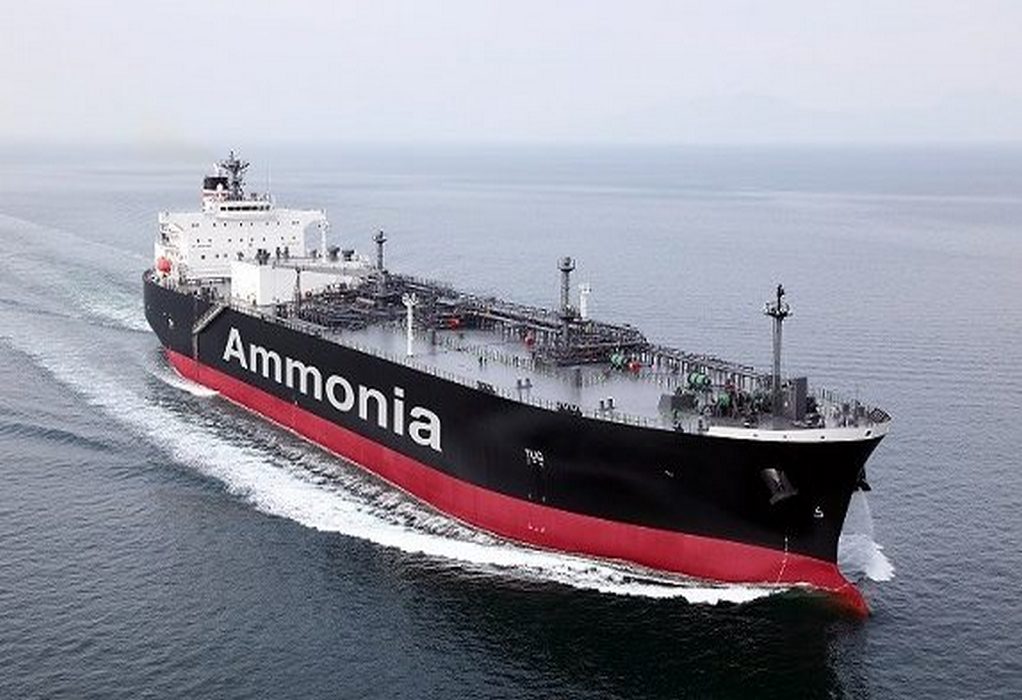A joint study into ammonia safety onboard ships undertaken by the Lloyd’s Register (LR) Maritime Decarbonisation Hub and the Mærsk Mc-Kinney Møller Center for Zero Carbon Shipping (MMMCZCS), has found that a range of mitigation methods, from ship design to crew training and operations, are required to keep toxicity risks to the crew within published tolerable limits.
‘Recommendations for Design and Operation of Ammonia-Fuelled Vessels based on Multi-disciplinary Risk Analysis’ presents the most comprehensive study to date of the effectiveness of risk mitigation measures in three ammonia-fuelled vessels – a container ship, a tanker, and a bulk carrier.
Seen as one of the most promising alternative fuels for the maritime energy transition, ammonia can be combusted with almost no carbon dioxide (CO2) emissions. However, using ammonia as a shipping fuel can create potential safety hazards, including toxicity. It is crucial for shipping stakeholders to understand the risks of ammonia as a shipping fuel and the safeguards that can be implemented to reduce them to tolerable levels.
Using Quantitative Risk Assessment (QRA) analysis, a powerful data-driven method that allows users to assess risk in a quantitative and granular manner, the joint study has been able to identify vessel design and operational measures that would reduce ammonia risks to a tolerable level.
The QRA provides recommendations for the design and operation of ammonia-fuelled vessels to embed higher levels of safety for the crew. Recommendations included lower storage temperatures to reduce safety risk; provision for two or more separate spaces containing different groups of equipment that could leak ammonia; monitoring and minimizing of access to and length of time spent in spaces containing ammonia equipment; ventilation outlets from spaces containing ammonia equipment placed in a safe location, adequately separated from areas accessed by the crew; and installation of multiple sensors of different types to detect ammonia leaks.
To complement the QRA, the second section of this report summarises insights from an analysis of human factors considerations that will be impacted by a transition to ammonia fuel use. These include competence and training needed to improve safety on ammonia-fuelled vessels; safe work practices and standard procedures that need to be implemented through systematic change management programs; and effective occupational health safeguards, such as personal protective equipment (PPE).
However, in the eagerness to transform, we must do so without compromising safety and reliability, by employing a strong risk-based change management approach. Care of our seafarers and strong safety management are imperative. This study has given us deep insights into risk and will provide critical understanding and intelligence to help guide the industry towards the safe application of ammonia as a marine fuel.”
The two decarbonization centers have been involved in a number of ammonia projects. LR is undertaking key feasibility studies into using clean ammonia to refuel ships at the world-scale ports in the Pilbara region of Western Australia. The MMMZCS and its partners are jointly conducting a feasibility study to establish a supply chain for the provision of green ammonia ship-to-ship bunkering at the Port of Singapore.
Tags: Ammonia, Lloyd's Register, Maersk Mc Kinney Moller, Recommendation, Vessels



Recent Posts
Hygenco Commissions Maharashtra’s First Green Hydrogen and Oxygen Facility to Power STL’s Net Zero Goals
India Invites Second Round of R&D Proposals Under ₹4 Billion Green Hydrogen Mission
BMTC Adds 148 Tata Electric Buses to Bengaluru Fleet, Strengthens Green Mobility Drive
MITSUI E&S Deploys Hydrogen Fuel-Cell RTG Crane at Yokohama’s Minami Honmoku Terminal
WinGD’s first ammonia-fuelled engine installed on EXMAR vessels
DP World and Asian Terminals Inc deploy first fleet of electric internal transfer vehicles in the Philippines
Lloyd’s Register Decarbonisation Hub Joins Mærsk Mc-Kinney Møller Center as Knowledge Partner
Wärtsilä engines selected to deliver reliable power for US data center